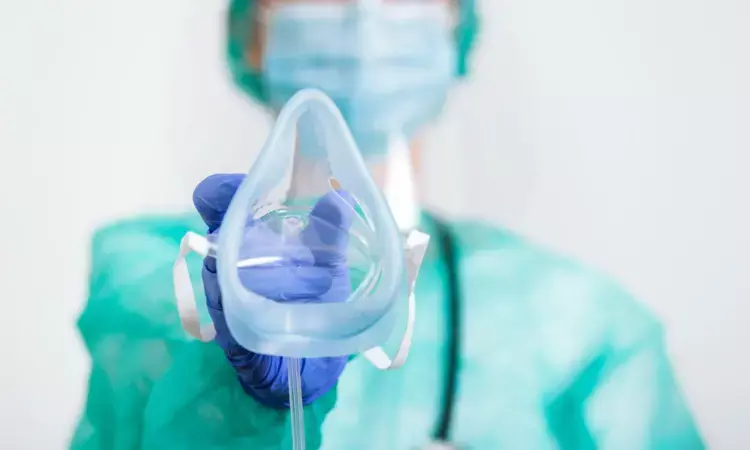- Home
- Medical news & Guidelines
- Anesthesiology
- Cardiology and CTVS
- Critical Care
- Dentistry
- Dermatology
- Diabetes and Endocrinology
- ENT
- Gastroenterology
- Medicine
- Nephrology
- Neurology
- Obstretics-Gynaecology
- Oncology
- Ophthalmology
- Orthopaedics
- Pediatrics-Neonatology
- Psychiatry
- Pulmonology
- Radiology
- Surgery
- Urology
- Laboratory Medicine
- Diet
- Nursing
- Paramedical
- Physiotherapy
- Health news
- Fact Check
- Bone Health Fact Check
- Brain Health Fact Check
- Cancer Related Fact Check
- Child Care Fact Check
- Dental and oral health fact check
- Diabetes and metabolic health fact check
- Diet and Nutrition Fact Check
- Eye and ENT Care Fact Check
- Fitness fact check
- Gut health fact check
- Heart health fact check
- Kidney health fact check
- Medical education fact check
- Men's health fact check
- Respiratory fact check
- Skin and hair care fact check
- Vaccine and Immunization fact check
- Women's health fact check
- AYUSH
- State News
- Andaman and Nicobar Islands
- Andhra Pradesh
- Arunachal Pradesh
- Assam
- Bihar
- Chandigarh
- Chattisgarh
- Dadra and Nagar Haveli
- Daman and Diu
- Delhi
- Goa
- Gujarat
- Haryana
- Himachal Pradesh
- Jammu & Kashmir
- Jharkhand
- Karnataka
- Kerala
- Ladakh
- Lakshadweep
- Madhya Pradesh
- Maharashtra
- Manipur
- Meghalaya
- Mizoram
- Nagaland
- Odisha
- Puducherry
- Punjab
- Rajasthan
- Sikkim
- Tamil Nadu
- Telangana
- Tripura
- Uttar Pradesh
- Uttrakhand
- West Bengal
- Medical Education
- Industry
Use of certain respirators tied to increased risk of airway complications: Study

UK: A new study published in the journal Anaesthesia found an increased risk for airway complications tied with filtering facepiece class 2 or 3 respirators; however, most aerosol precautions during the COVID-19 pandemic were not.
During the COVID-19 pandemic, the perceived transmission risk of aerosolized viral particles from patients to airway practitioners led to the extensive use of aerosol precautions, including modifications to anesthetic techniques and personal protective equipment. There has been no assessment of the risk of these aerosol precautions on peri-operative airway complications outside of simulation studies.
Against the above background, K. El-Boghdadly, King's College London, UK, and colleagues conducted a national, prospective, multicentre cohort study to quantify this risk.
The study included adult patients undergoing general anesthesia for elective or emergency procedures for 96-hour. The researchers collected data on airway complications, the use of aerosol precautions by the airway practitioner, and potential confounding variables. The risk of individual aerosol precautions was assessed, and specific airway complications were evaluated using Mixed-effects logistic regression. Data were included from 5905 patients from 70 hospital sites.
The study yielded the following findings:
- The rate of airway complications was 10.0%.
- Use of filtering facepiece class 2 or class 3 respirators was associated with an increased risk of airway complications (odds ratio 1.38), mainly due to an association with difficult facemask ventilation (odds ratio 1.68) and desaturation on pulse oximetry (odds ratio 2.39).
- The use of powered air-purifying respirators, goggles, double gloves, long-sleeved gowns, and video laryngoscopy was not associated with any change in airway complications risk.
The study had certain limitations, including it being an observational study, reliance upon anesthetists for reporting airway complications that may cause inaccurate reporting, and insufficient granularity for detecting the sequence of events.
The researchers wrote, "in our study of anesthetic management in the context of the use of aerosol precaution PPE, minor complications were frequent, and we did not observe any major airway complications."
"The use of FFP2 or FFP3 respirators was linked with a small but significantly higher risk of airway complications, and no other components of the aerosol precaution bundle were associated with airway complications," they explained.
"In the wake of significant changes to airway management, these findings should serve as reassurance that anesthetists have continued to provide safe care for patients needing general anesthesia," the team concluded. "Further studies will be required to establish causality between FFP2 or FFP3 respirator use and airway complications."
Reference:
Potter T, Cronin JN, Kua J, Nurmi E, Wong DJN, Ahmad I, Cook TM, El-Boghdadly K; AeroComp Trainee Research Networks; Collaborators. Aerosol precautions and airway complications: a national prospective multicentre cohort study. Anaesthesia. 2022 Sep 7. doi: 10.1111/anae.15851. Epub ahead of print. PMID: 36070622.
Dr Kamal Kant Kohli-MBBS, DTCD- a chest specialist with more than 30 years of practice and a flair for writing clinical articles, Dr Kamal Kant Kohli joined Medical Dialogues as a Chief Editor of Medical News. Besides writing articles, as an editor, he proofreads and verifies all the medical content published on Medical Dialogues including those coming from journals, studies,medical conferences,guidelines etc. Email: drkohli@medicaldialogues.in. Contact no. 011-43720751


